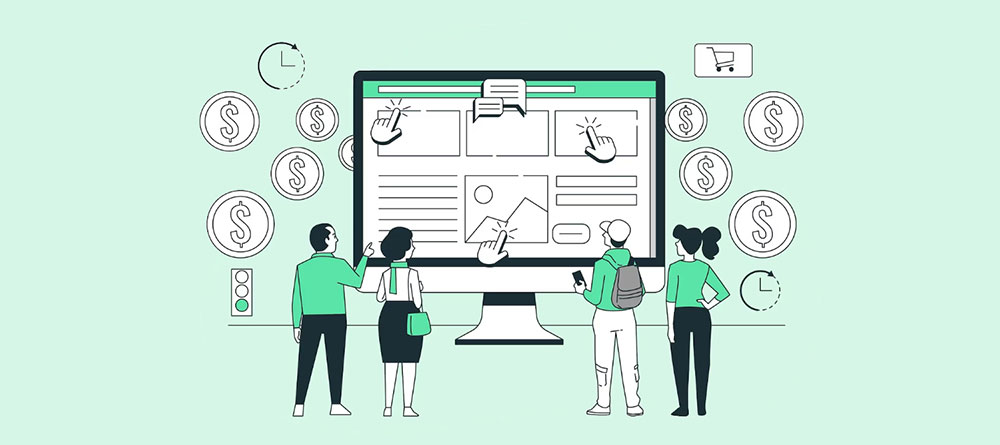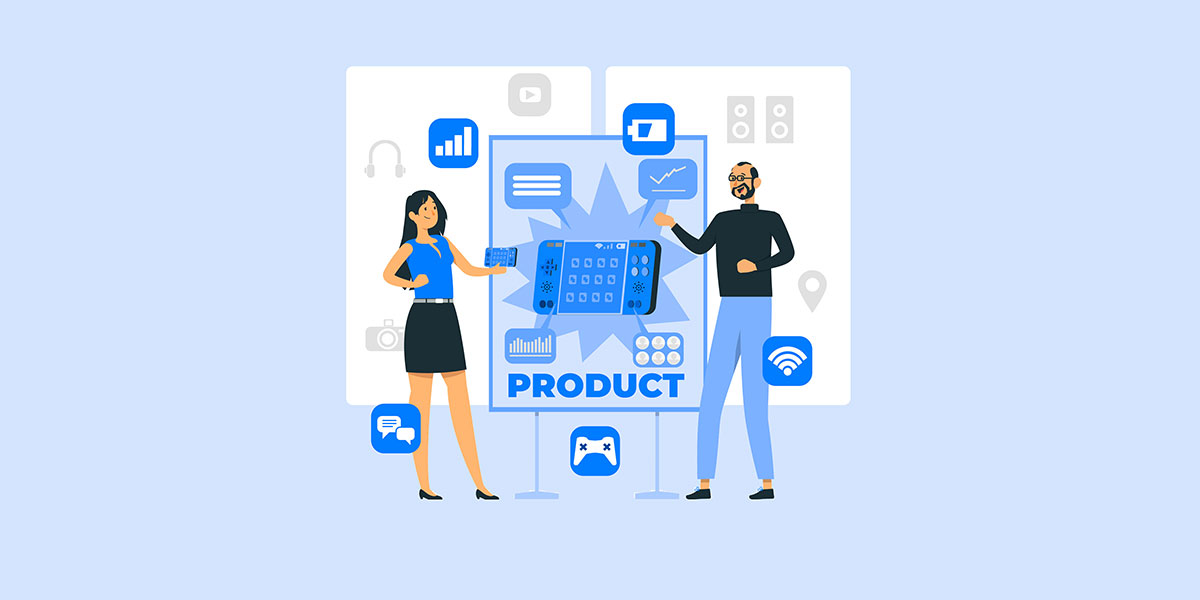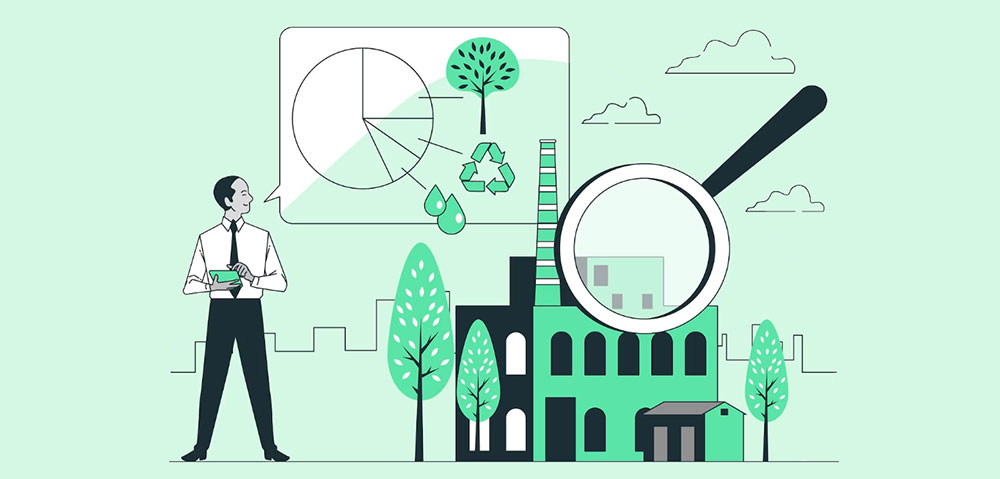Ever cracked open a puzzle box, letting the pieces fall into place with just the right twist and turn? Product monetization strategies feel a lot like that—aligning each component perfectly to transform your offerings into profit.
In a world that never hits pause on innovation, knowing the secret sauce to cook up revenue can set your creations apart in the bustling market.
Think about it; the most incredible products can fizzle out without a solid game plan to monetize them, and that’s where the rubber meets the road for getting it right.
By the time you’ve devoured this read, you’ll be navigating through the nuances of revenue models and pricing strategies with the finesse of a maestro conducting an orchestra.
From the intricacies of SaaS monetization to the stealth of digital marketing, prepare to unravel a tapestry of tactics designed to pump up your financial potential.
Ready to dive into the anatomy of profit maximization? It’s about more than just survival in the digital jungle—it’s about thriving, scaling, and leaving the competition in your pixel dust.
Key takeaways
- Customer Lifetime Value (CLV): CLV is essential in product monetization, as it gauges the total revenue a customer will generate over their lifetime. Understanding CLV can influence how much to spend on customer acquisition and guide pricing and marketing strategies.
- Testing Various Monetization Strategies: Before fully committing to a monetization strategy, it’s vital to test different approaches to gather data on what’s effective and what’s not, reducing the risk of unprofitable decisions.
- Subscription Model Benefits: Subscription models can positively affect customer behavior by establishing a recurring revenue stream and encouraging higher engagement. However, continuous value delivery is crucial to prevent cancellations.
- Balancing Monetization and User Experience: While monetizing a product, it’s important to maintain transparency with customers to avoid alienating them. Any monetization strategy should add value and not disrupt the user experience.
Understanding the Basics of Monetization
The Concept of Value Proposition
Okay, before we get any further, let’s talk about value proposition. It’s a fancy term, but all it means is the unique value your product offers that makes it stand out from the crowd. It’s the answer to the question, “Why should someone choose your product over the others?” It could be anything from superior quality, better pricing, or that little extra something that only your product has.
The Role of Market Trends in Monetization
Next up, market trends. You see, what worked yesterday might not work today, and most definitely not tomorrow. The market is constantly changing, and keeping a pulse on these changes is key to a successful product monetization strategy.
Imagine you’re a surfer. The waves are the market trends. To ride them, you need to know when to paddle, when to stand up, and when to bail out. It’s the same with your product. Timing and adaptation according to market trends can make or break your monetization.
The Psychology of Pricing
Pricing, my friends, is more art than science. It’s all about understanding human behavior and how we perceive value. Just think about the last time you purchased something. Did you go for the cheapest option? Not necessarily, right?
Pricing is like a communication tool. It speaks volumes about your product, its value, and its positioning in the market. Get it right, and your customers will believe they’re getting more than what they paid for. Get it wrong, and they’ll feel ripped off. It’s a delicate balance, and understanding the psychology of pricing is crucial to strike it.
In the next sections, we’re going to get into different types of product monetization strategies and how to implement them. So stick around, because it’s going to get really interesting.
Different Types of Monetization Strategies

Selling Ad Placements
So, you have a website with a decent amount of traffic. Awesome. Why not let others pay you to place their ads on your site? You’ve got the audience, they need the exposure. It’s a win-win situation.
Sponsored Content
Another strategy is sponsored content. Here’s how it works: you create content that subtly promotes a brand or product. It could be a blog post, a video, a podcast, you name it. The sponsor pays you for this content, and your audience gets some valuable information. Neat, huh?
Paid Membership Subscriptions
Paid memberships can work wonders if you’ve got content or features worth paying for. In exchange for a fee, your members get exclusive access to your best stuff. And the best part? You have a steady stream of revenue coming in.
Offering a Premium Version of Your Product
Sometimes, the free stuff is just not enough. That’s when a premium version comes in. You offer your basic product for free, and a more feature-packed version for a price. It’s a classic way to monetize a product.
Subscription Model
A subscription model can be a goldmine if you’ve got a product or service that people need on the regular. Think Netflix or Spotify. You provide continuous value, and your customers pay a recurring fee for it.
Creating a Unique Marketplace for Your Product
Imagine having a playground where only your product gets to shine. Creating a unique marketplace for your product could be just the thing you need to rake in the big bucks. It gives you full control over how your product is presented and how it interacts with the customers. Now, how cool is that?
Affiliate Marketing
Then there’s affiliate marketing. Basically, it’s about partnering with others to sell your product. Every time they make a sale, you give them a piece of the pie. It’s like having an army of salespeople working for you. Only that you don’t pay them a salary, just a commission on what they sell.
Charging for Access to Content
If you’re in the content game, this one’s for you. You create valuable content, and you charge your users for accessing it. It could be a research report, an exclusive video, a detailed how-to guide, you name it. As long as your users find it valuable, they’ll be willing to pay for it.
Offering Add-on Products and Services
Who doesn’t love a good bonus? Offering add-on products or services is a fantastic way to increase the value of your product. And the best part? You get to make some extra cash along the way. It’s like the cherry on top of the cake, only that this cherry is made of money.
Creating a Loyalty Program
Who doesn’t love feeling special, right? A loyalty program can make your customers feel just that. By rewarding them for sticking with you, you’re not just improving your relationship with them, you’re also incentivizing them to spend more. Now that’s what I call a win-win.
Selling Ad Space
The classic, selling ad space. You’ve got an audience and others want a piece of it. Selling ad space on your platform could be a great way to monetize your product. Just make sure the ads don’t take away from the user experience. After all, it’s all about balance.
Implementing Monetization Strategies
Understanding Your Audience
Before you jump into implementing any product monetization strategy, you’ve got to know your audience. What do they want? What do they value? What are they willing to pay for? The answers to these questions will guide you in choosing the best strategy for your product.
Aligning Monetization with User Experience
Remember, you’re in the business of solving problems for your customers. That’s why they’re with you in the first place. Any monetization strategy that you implement should enhance the user experience, not take away from it.
Leveraging Data for Monetization
Data is the new oil. It gives you insights about your customers, your product, and the market. It tells you what’s working and what’s not. And when used right, it can significantly boost your monetization efforts.
Implementing Monetization Strategies
Understanding Your Audience
Step one in your product monetization strategy: know thy audience.
Every successful product has one thing in common – they know exactly who their audience is. And it’s not just about demographics. It’s about their needs, their wants, their pain points.
Understanding your audience is like having a compass. It shows you where to go, what to avoid, and how to reach your destination faster.
Aligning Monetization with User Experience
Ever been on a website with pop-up ads that just won’t quit? Annoying, right?
Monetization should never come at the cost of user experience. They’re two sides of the same coin. Both need to work together to create an awesome product.
So, whether you’re selling ad space or offering premium features, always ask: “Will this enhance my user’s experience?” If the answer is no, it’s back to the drawing board.
Leveraging Data for Monetization
In the world of product monetization, data is your best friend. It’s like a map, showing you where you are and where you could be.
What kind of data, you ask? Well, everything from user behavior to market trends. The more you know, the better your decisions will be.
Data helps you tailor your product monetization strategy. It shows you what’s working and what’s not. And, more importantly, it gives you insights into how you can improve.
The Role of Sales Teams in Monetization
The Difference Between Good and Bad Sales Teams
A good sales team can skyrocket your product’s monetization, while a bad one can… well, do the exact opposite.
It’s not just about selling; it’s about creating relationships, understanding customer needs, and providing value.
The Impact of Sales Strategies on Product Value
Your sales strategy is a key element of your product monetization strategy. It determines how your product is presented and perceived in the market.
A well-executed sales strategy can increase your product’s value and consequently, its monetization.
The Impact of Monetization on Customer Retention
The Connection Between Monetization and Customer Value
Monetization isn’t just about making money. It’s also about delivering value to your customers. And the more value you deliver, the more likely they are to stick around. In short, a great product monetization strategy can boost your customer retention.
The Role of Usage Analytics in Customer Retention
Ever wondered what your customers are doing with your product? Usage analytics can tell you. It can show you how often they use your product, what features they love, what issues they encounter, and more. These insights can help you improve your product and, in turn, your monetization.
The Evolution of Monetization Strategies
The Influence of Big Data on Monetization
Big data has changed the game. It’s like having a superpower that lets you see into the future.
It can predict trends, uncover opportunities, and even help you personalize your product monetization strategy. And as big data continues to grow, so do the possibilities.
The Rise of the Sharing Economy
The sharing economy has given rise to a whole new way of monetizing products.
Think Airbnb, Uber, and other platforms that let people share resources. These platforms have not only disrupted traditional industries but also introduced new monetization models.
The Shift Towards Subscription Services
Subscription services are becoming the norm. And why not? They offer value, convenience, and consistency. Plus, they provide a steady stream of revenue. A win-win for both businesses and customers.
Case Studies of Successful Monetization Strategies
Uber’s Pay-per-ride Model

Uber nailed it with their pay-per-ride model. They understood that people wanted convenience, flexibility, and affordability.
And they delivered it in a simple, easy-to-use app.
This is a prime example of how a great product monetization strategy can revolutionize an industry.
Airbnb’s Property Rental Model

Airbnb turned the hospitality industry on its head with their property rental model. They made it easy for anyone with a spare room or a vacant house to earn money.
In doing so, they created a whole new marketplace and a new way of traveling.
Spotify’s Premium and Subscription Models

Spotify took the music industry by storm with their premium and subscription models.
They made music accessible, affordable, and personalized. And they made money while doing it. Talk about hitting the right note!
Challenges in Monetization
The Difficulty of Pricing
Pricing your product is no walk in the park. Price it too high, and you could scare away customers. Price it too low, and you might not make enough to sustain your business.
The Risk of Invading User Privacy
When it comes to monetization, data is key. But there’s a thin line between using data for monetization and invading user privacy. Cross it, and you risk losing your customers’ trust.
The Challenge of Maintaining Value Propositions
Your value proposition is what sets you apart from the competition. It’s why customers choose you over others. But as you grow and monetize your product, maintaining your value proposition can be a challenge.
FAQ On Product Monetization Strategies
What Are the Different Revenue Models for Product Monetization?
Straight-up, understanding your revenue models is key. It’s about choosing – will you go with a one-off sale, a subscription, or is freemium your jam? Fact is, each model flips a different profit switch. Think digital goods, think licensing, think SaaS – your product’s nature and your audience’s habits dictate the game.
How Can I Determine the Best Pricing Strategy for My Product?
It’s a mix of art and science. Start with your costs, peep at the competition, and don’t forget the value you’re dishing out. Whether it’s value-based pricing or dynamic models, your end goal is always profit maximization while keeping customers feeling they’ve struck gold.
What Is SaaS Monetization and How Does It Work?
SaaS monetization? That’s when you’re offering software through a subscription sandwich – often monthly or yearly. The trick’s in balancing features with price points. Throw in some tiered plans, and maybe a side of freemium access, and you’re set to attract a range of appetites.
Can Product Bundling Be an Effective Monetization Strategy?
Heck, yes. Bundling’s like hosting a party on your product shelf—invite a few related items and watch customers RSVP yes to higher value deals. You’re essentially sweetening the pot. Also, it’s a nifty cross-selling strategies move. Your overheads might just give you a wink with economies of scale.
How Do I Boost Monetization Through Digital Marketing?
Get ready to mingle on social platforms and dance with SEO. Digital marketing gives you the mic to broadcast your brand’s story. Hit them with content marketing, throw pay-per-click into the mix, and when done right, you’re looking at a better Conversion Rate Optimization (CRO).
What Role Does a Business Model Play in Monetization?
Business models are the blueprint of your monetization house. It’s a game-plan of how you’ll bag profits and keep the lights on. It’s choosing either a direct sales approach or deciding to hop into bed with affiliate marketing. Think long-term structure, think scalability.
How Important Is Market Analysis in Developing Monetization Strategies?
Market analysis is the GPS that keeps you from driving blind. It sizes up demand, zeroes in on customer profiles, and scouts the competition’s turf. Armed with that intel, you’re all set to tailor your monetization plays and Economic Value Proposition to soar like a hawk.
What Are Some Common Mistakes to Avoid When Monetizing a Product?
Common boo-boos? Where to start. Overshooting your pricing runway, sleeping on customer experience, or missing the local Search Engine Optimization (SEO) party for localization. Ignoring these is like stepping on a rake—don’t do it. Keep pace with your Consumer Demographics, pivot fast, and stay lean.
How Do Payment Gateways Influence Product Monetization?
Payment gateways grease the skids for cash to flow smooth. User-friendly, secure checkout means more green lights to purchases. Diverse payment options? That’s music to global customers’ ears. It’s about cutting friction and making it a cakewalk to part with their cash.
In What Way Do Financial Metrics Influence Monetization Strategy Decisions?
If financial metrics were a ship, you’d be the captain. They’re the North Star guiding decisions. Chasing Revenue Generation Techniques without eyeballing the numbers? Might as well sail blind. Track your Customer Acquisition Cost, Lifetime Value, and keep that ROI handsome. Your wallet will thank you.
Conclusion
And there we have it, we’ve sailed across the vast product monetization strategies ocean. From the alluring call of freemium models to the strategic play of subscription services, we’ve unpacked a treasure chest of tactics.
- SaaS monetization – not just a buzzword, but a realm of recurring revenue.
- Pricing strategies – fine-tuning them to hit the sweet spot of profits.
Nailed your market analysis yet? It’s the compass that points right where the X marks the spot on your treasure map. And remember, digital marketing? It’s the wind in your sales… I mean sales.
Boldly steer through these waters. Keep a steady hand on your financial metrics; they’re your North Star. Toast to the thought of that profit maximization, because, at the end of the day, isn’t that what we’re all here for?
So, here’s to finding the course that leads to your El Dorado. May your monetization strategies be as boundless as the seven seas!
If you liked this article about product monetization strategies, you should check out this article about product validation.
There are also similar articles discussing user adoption strategies, product branding, product-led onboarding, and product documentation.
And let’s not forget about articles on product-led sales, product iteration, PLG vs SLG, and product management with Monday.
- Professional Video: Cinematography Apps Like FiLMiC Pro - April 26, 2024
- Optimizing Your Shopify Store for Maximum Dropshipping Success - April 26, 2024
- Python Explained: What is Python Used For? - April 26, 2024









